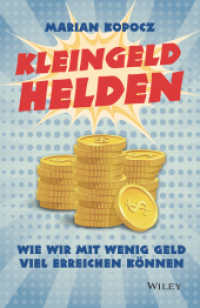- ホーム
- > 洋書
- > ドイツ書
- > Social Sciences, Jurisprudence & Economy
- > Jurisprudence & Law
- > general surveys & lexicons
Description
(Text)
This research fills a gap in the knowledge of microrelief as a tool for recovering degraded land, and adds to the knowledge with a new and original contribution. The literature on surface microrelief, one of the major factors that control stormflow, surface runoff, and related ecosystems functions, including soil formation, was reviewed in the global and peri-urban context. It was concluded that anthropogenic development exacerbates stormwater flow, soil erosion and biodiversity losses. The conventional response is to harden and drain the land, depleting ecosystem functions and denying water from the soil. Trends in stormwater, erosion control and urban water cycle management within water sensitive design thinking (WSD) and the prevailing catchment drainage paradigm were reviewed and found inadequate for addressing erosion, which continues at many hundreds of times the rate of soil formation. Australian legislation requires ecologically sustainable development and 'the maintenance of ecosystems that sustain life'. This requirement is not being met. Soils, biological capacity and local water cycles are depleted by anthropogenic development.
(Author portrait)
Stevens, Peter R.
Peter R. Stevens - BSc Arch., University of NewcastleGrad. Dip. Environmental Management, Charles Sturt University, Australia.







